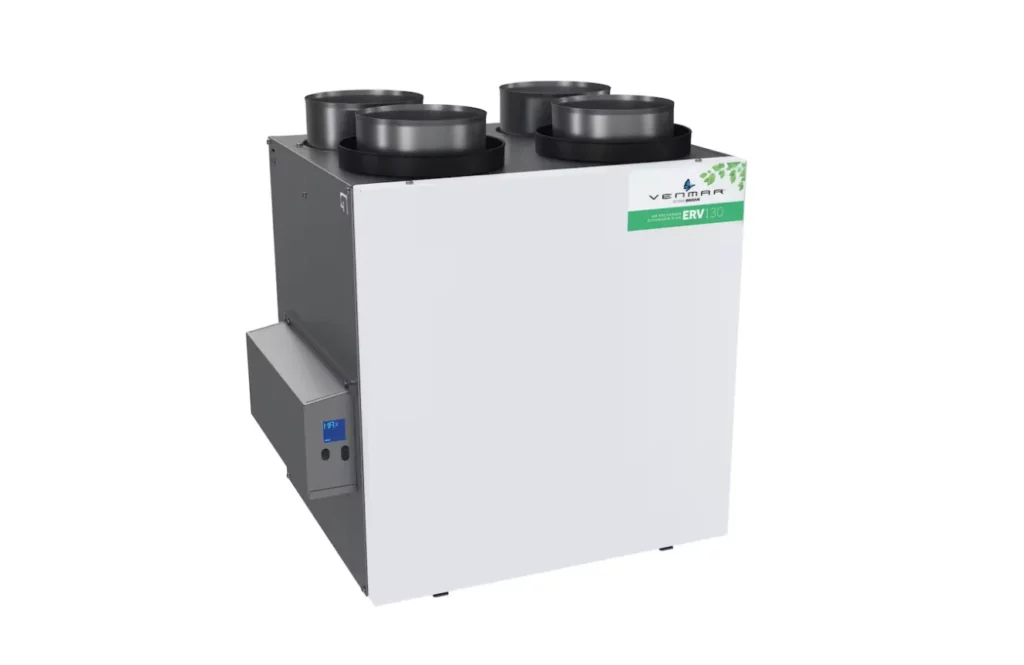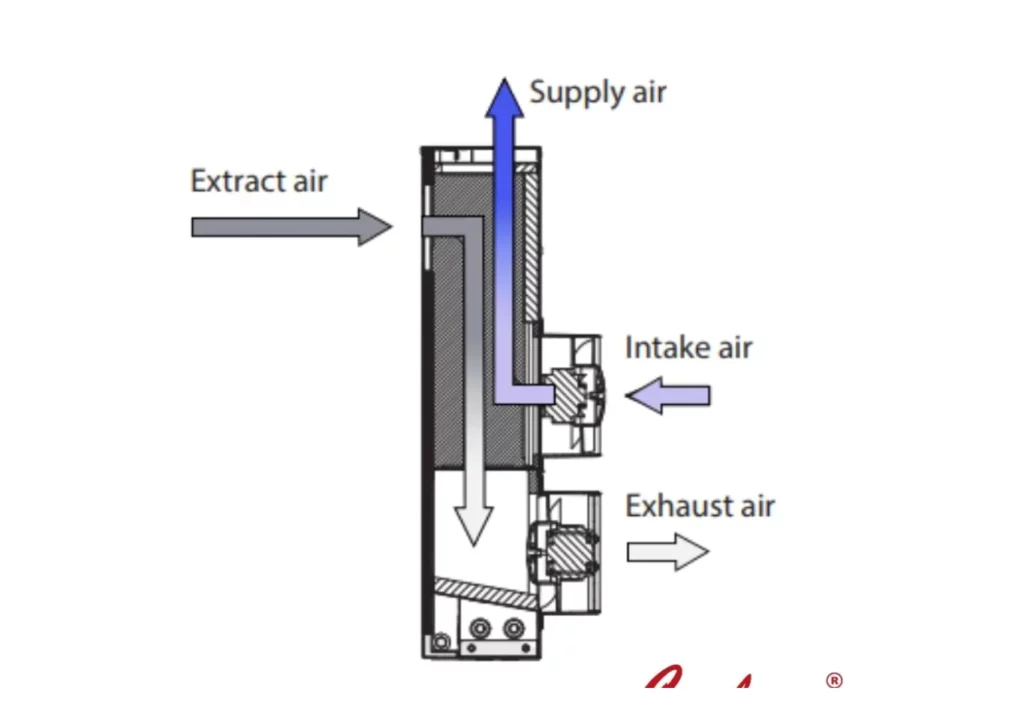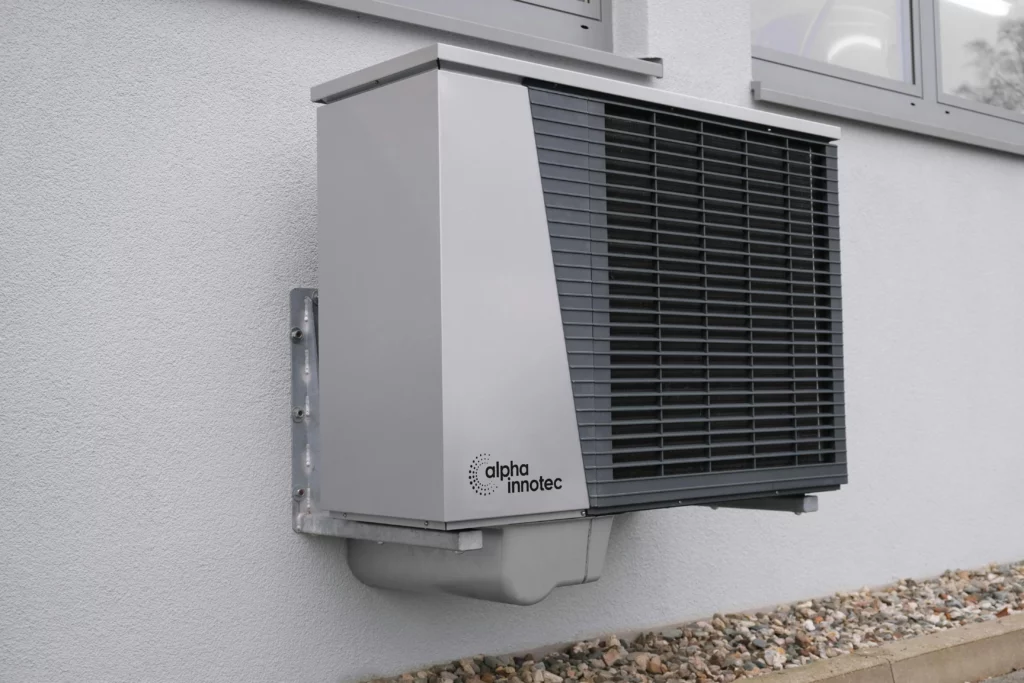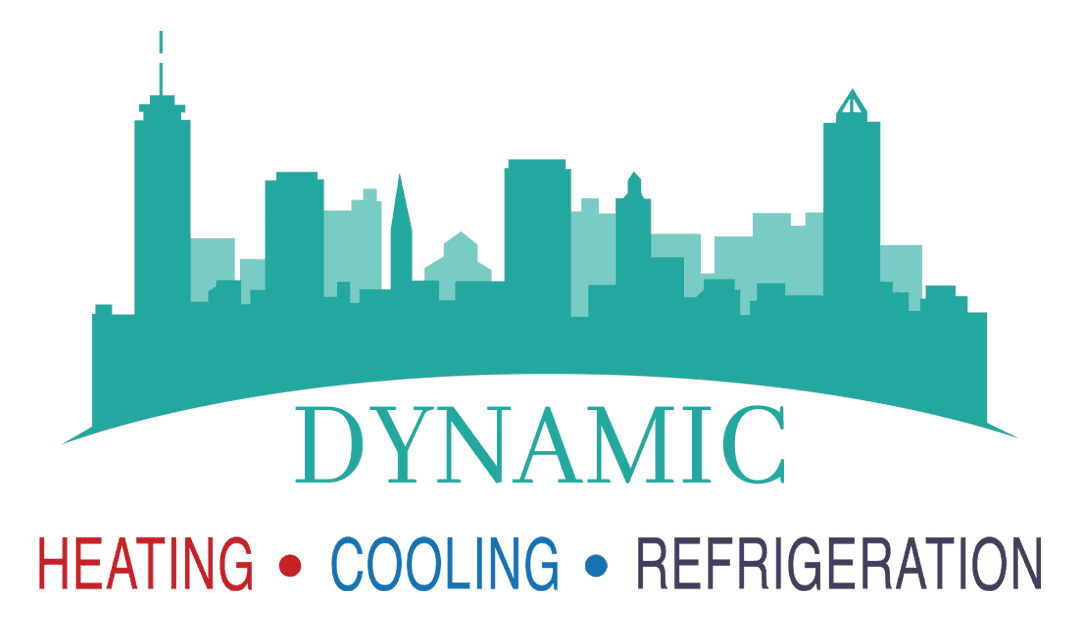Every year, countless homeowners face the decision of improving their home ventilation systems, but often get stuck on one critical question: “HRV vs ERV – what’s the best choice for my home?” Understanding the difference between Heat Recovery Ventilators (HRV) and Energy Recovery Ventilators (ERV) can significantly impact your indoor air quality and energy efficiency.
In this blog post, we will explore the functionalities and benefits of HRV and ERV systems. This post will help you make an informed decision for your residential or commercial space.

What are HRV and ERV Systems?
Navigating the choice between HRV vs ERV systems is essential for homeowners aiming to optimize indoor air quality and energy efficiency. Both systems offer unique benefits that can significantly enhance the comfort and health of indoor environments, but understanding their differences and applications is key to making an informed decision.
HRVs: Heat Recovery Ventilators
HRVs, or Heat Recovery Ventilators, are crucial for maintaining a fresh, comfortable indoor environment. They are particularly effective in colder climates where keeping a home warm without excessive energy expenditure is important. An HRV like the Vanee air exchanger or an HRV HVAC system captures warmth from outgoing stale air and transfers it to incoming fresh air, ensuring efficient heating.
ERV: Energy Recovery Ventilators
In the HRV vs ERV discussion, ERV stands out by not only recovering heat but also balancing humidity levels between the incoming and outgoing air streams. This dual functionality is crucial in areas with significant seasonal humidity variations, providing comfort and health benefits across different climates.
HRV vs ERV: Understanding Their Functionalities
The choice between HRV vs ERV can often come down to the specific climate needs of a home—whether straightforward heat recovery or comprehensive temperature and humidity control is required. Understanding the nuances in the HRV vs ERV debate is crucial for homeowners who prioritize energy efficiency alongside indoor air quality.

How Does an HRV System Work?
The operation of a heat recovery system centres around a heat exchanger that transfers heat from outgoing stale air to fresh incoming air without mixing the two streams. This system is ideal for areas where the main concern is keeping the indoor environment warm without additional humidity control.
How Does an ERV System Work?
An ERV extends the functionality of a heat recovery system by also transferring moisture between outgoing and incoming air streams. This feature not only aids in temperature control but also ensures optimal indoor humidity levels, making ERVs particularly effective in mixed climates where both heating and cooling may be necessary throughout the year.
Key Difference Between HRV and ERV Systems
- HRV Process: Heat recovery systems focus on expelling indoor air pollutants and excess moisture while capturing heat from outgoing air to warm the incoming air.
- ERV Process: ERVs add to the HRV functionality by also redistributing moisture along with heat from outgoing to incoming air, ensuring a balanced indoor climate conducive to both comfort and health.
Interaction of HRV and ERV Systems with HVAC Systems
HRV systems (Heat Recovery Ventilators) and ERV systems (Energy Recovery Ventilators) are often considered supplementary to traditional HVAC systems like furnaces and heat pumps. These systems interact in several ways to enhance the overall efficiency and comfort of your indoor environment.
HRV vs ERV: HVAC Interaction
Supporting Furnace Efficiency
HRVs work in conjunction with furnaces by pre-heating the incoming cold air with the heat extracted from the outgoing stale air. This means the furnace doesn’t have to work as hard to heat the air to the desired temperature, thereby saving energy and reducing operational costs.
Complementing Heat Pumps
In homes with heat pumps, a heat recovering system can minimize the energy burden on the heat pump by maintaining a more consistent base temperature throughout the home. This is particularly beneficial during colder months when heat pumps are less efficient.
Enhancing Air Conditioner Performance

During the hot months, ERV systems can reduce the humidity level of the incoming air, which means the air conditioner can cool the home more efficiently without the extra load of reducing indoor humidity.
Supporting Heat Pumps in Humid Climates
In regions with high humidity, ERV systems can help heat pumps by balancing the indoor humidity levels, ensuring that the heat pump can operate efficiently for both heating and cooling without additional strain from excessive moisture.
HRV vs ERV: Complementing HVAC Systems
- Energy Savings: Both HRVs and ERVs can significantly reduce the energy required to heat or cool the home because they pre-treat the air that enters the HVAC system. This results in lower utility bills and less wear and tear on the HVAC system itself.
- Improved Indoor Air Quality: By continuously replacing stale indoor air with filtered, fresh outdoor air, HRVs and ERVs can improve the air quality within a home. This is especially important in tightly sealed, energy-efficient homes where natural air leakage is minimal.
- Moisture Control: ERVs specifically help in managing the moisture levels inside the house. By transferring moisture from the incoming humid air to the drier outgoing air, ERVs prevent excessive humidity in summer and overly dry air in winter, which can be a challenge for conventional HVAC systems to manage alone.
- Extended HVAC Lifespan: Since HRVs and ERVs can lessen the load on HVAC systems by pre-conditioning the air, the main heating and cooling equipment experiences less extreme temperature swings and moisture levels, thereby potentially extending the lifespan of these systems.
In essence, HRVs and ERVs do not replace HVAC systems but rather enhance their efficiency and effectiveness. By integrating an HRV or ERV with your existing furnace or heat pump, you ensure that your heating and cooling systems do not have to work as hard to achieve the desired indoor climate, leading to energy savings, improved air quality, and prolonged system life.
For a comprehensive assessment of how an HRV or ERV can complement your specific HVAC setup, and to explore options like the Vanee air exchanger or other heat recovery units, contact us at Dynamic Heating and Cooling. Our experienced team is ready to optimize your home’s ventilation and heating solutions to ensure maximum comfort and efficiency.
Choosing the Right System for Your Home

When deciding between an HRV and an ERV, consider factors such as your local climate, the airtightness of your building, and your specific household needs. For instance, the best HRV system Canada might be different from what would be considered ideal in a more temperate climate.
Dynamic Heating and Cooling: Your Partner in Ventilation Solutions
At Dynamic Heating and Cooling, we understand that every home is unique. Whether you’re exploring a van ee HRV for its specific benefits or require the advanced humidity control of a van ee ERV, our team of certified professionals is here to guide you through the selection process, ensuring that your ventilation and heat recovery choices align perfectly with your living environment.
For further assistance and to explore our range of our HVAC solutions, contact us at Dynamic Heating and Cooling today. Our experts are ready to help you achieve optimal air quality and energy efficiency in your home or business.


